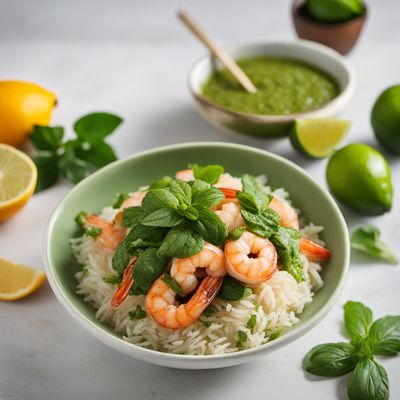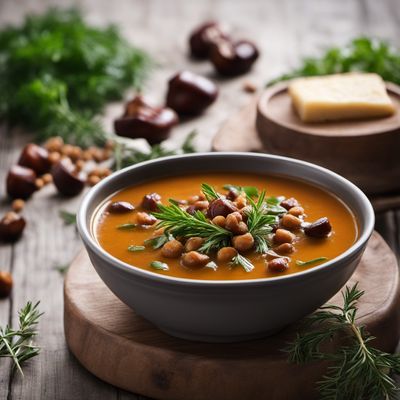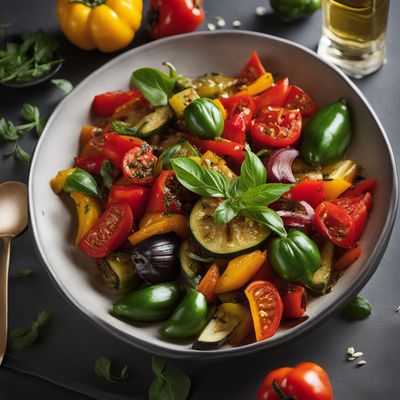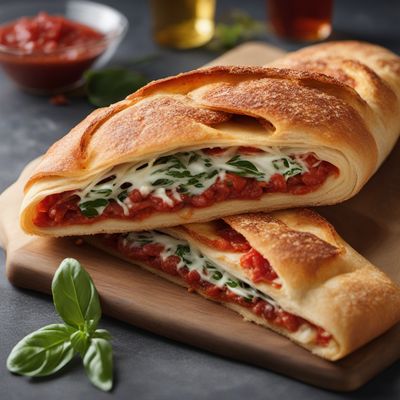
Recipe
Homemade Basil Pesto Pasta
Basil Bliss: A Flavorful Homemade Pesto Pasta Recipe
4.9 out of 5
Indulge in the vibrant flavors of Italian cuisine with this homemade basil pesto pasta recipe. Bursting with the freshness of basil leaves, the creaminess of pine nuts, and the richness of Parmesan cheese, this dish is a true celebration of the traditional Italian flavors.
Metadata
Preparation time
15 minutes
Cooking time
10 minutes
Total time
25 minutes
Yields
4 servings
Preparation difficulty
Easy
Suitable for
Vegetarian, Gluten-free (when using gluten-free pasta), Nut-free (when pine nuts are omitted and replaced with sunflower seeds), Low-carb (when served with zucchini noodles), Keto-friendly (when served with shirataki noodles)
Allergens
Dairy (Parmesan cheese), Nuts (pine nuts)
Not suitable for
Vegan (due to the presence of Parmesan cheese), Dairy-free (due to the presence of Parmesan cheese), Paleo (due to the presence of grains)
Ingredients
-
2 cups (60g) fresh basil leaves 2 cups (60g) fresh basil leaves
-
3 cloves of garlic 3 cloves of garlic
-
1/4 cup (30g) pine nuts 1/4 cup (30g) pine nuts
-
1/2 cup (50g) grated Parmesan cheese 1/2 cup (50g) grated Parmesan cheese
-
1/2 cup (120ml) extra virgin olive oil 1/2 cup (120ml) extra virgin olive oil
-
1/2 teaspoon salt 1/2 teaspoon salt
-
1/4 teaspoon black pepper 1/4 teaspoon black pepper
-
12 ounces (340g) pasta of your choice (such as spaghetti or penne) 12 ounces (340g) pasta of your choice (such as spaghetti or penne)
Nutrition
- Calories (kcal / KJ): 450 kcal / 1880 KJ
- Fat: 38g (Total), 7g (Saturated)
- Carbohydrates: 18g (Total), 2g (Sugars)
- Protein: 10g
- Fiber: 3g
- Salt: 0.8g
Preparation
-
1.In a food processor, combine the basil leaves, garlic, pine nuts, Parmesan cheese, salt, and black pepper. Pulse until the ingredients are finely chopped.
-
2.While the food processor is running, slowly drizzle in the olive oil until the mixture forms a smooth and creamy sauce.
-
3.Cook the pasta according to the package instructions until al dente. Drain the pasta, reserving a small amount of the cooking water.
-
4.In a large bowl, toss the cooked pasta with the pesto sauce, adding a splash of the reserved cooking water if needed to loosen the sauce.
-
5.Serve the pesto pasta warm and garnish with additional grated Parmesan cheese, if desired.
Treat your ingredients with care...
- Basil leaves — Ensure that the basil leaves are fresh and vibrant green for the best flavor. Avoid using wilted or discolored leaves.
- Pine nuts — Lightly toast the pine nuts in a dry skillet over medium heat for a few minutes until they turn golden brown. This enhances their nutty flavor.
- Parmesan cheese — Use freshly grated Parmesan cheese for the best taste. Avoid using pre-packaged grated cheese, as it may contain additives that affect the texture of the pesto.
Tips & Tricks
- For a creamier pesto sauce, add a tablespoon of heavy cream or Greek yogurt while blending the ingredients.
- If you prefer a stronger garlic flavor, add an extra clove of garlic to the pesto sauce.
- To make the dish more substantial, add grilled chicken, shrimp, or roasted vegetables to the pasta.
- If you want a lighter version, reduce the amount of olive oil and replace it with vegetable broth or water.
- Leftover pesto can be stored in an airtight container in the refrigerator for up to a week. Make sure to cover the surface with a thin layer of olive oil to prevent discoloration.
Serving advice
Serve the homemade basil pesto pasta as a main course, accompanied by a fresh green salad and crusty bread. It can also be served as a side dish alongside grilled meats or roasted vegetables.
Presentation advice
Garnish the pesto pasta with a sprinkle of freshly grated Parmesan cheese and a few basil leaves for an elegant touch. Serve it in a shallow pasta bowl or on a large platter to showcase the vibrant green color of the pesto.
More recipes...
For Pesto Genovese
More Italian cuisine dishes » Browse all

Sfinci di San Giuseppe
Sfinci di San Giuseppe are a type of cream puff that originated in Italy. These light, airy pastries are typically filled with pastry cream and...

Sarde a beccafico
Stuffed Sardines
Sarde a beccafico is a traditional Sicilian dish that is made with sardines stuffed with breadcrumbs, pine nuts, raisins, and herbs. It is a...

Zuppa crema di piselli
Pea soup
Zuppa crema di piselli is a creamy pea soup that is popular in Italy. It is a simple and delicious soup that is perfect for a light lunch or dinner.






